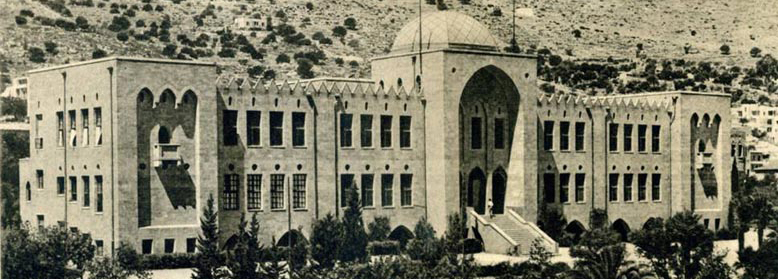The Faculty of Architecture and Town Planning at the Technion is the oldest academic institute in Israel for the study of architecture. It began operating in December 1924 as one of the first two departments of the Technion (the other was the department of Civil Engineering). The initiative to establish the faculty came from the Jewish-German aid association (Hilfsvereins der deutschen Juden), with the aim of setting up a high technical school typical to German-speaking countries of that time. The first head of the Department of Architecture was Prof. Arch. Alexander Baerwald, who was hired by an aid association as early as 1909 to design the main building of the institution. Baerwald laid the pedagogical foundations of the Department and served in the position until his death in 1930. He was replaced by architect Yohanan Ratner, who held the position for about two decades.
During Ratner’s tenure as head of the Department of Architecture, the department established its position in the local professional field as the only higher institution for training architects in Mandatory Palestine, while absorbing renowned Jewish architects from Germany and European countries following the Nazi rise to power in 1933. In the years before the establishment of the State of Israel, the number of students in the faculty was small, and a class of 12 graduates was considered a large class. In those years the emphasis in teaching was on the technical aspects of the profession, reflecting the Central European approach. Most of the training was devoted to theoretical courses, leaving limited time for practical engagement with planning problems. This pedagogical approach faced opposition during the 1960s from some of the faculty teachers, led by architect Al Mansfeld, and this opposition eventually led to the gradual adoption of a teaching model in which practical design experience (the “studio method”) is at the heart of practical architecture studies.
With the transformation of the Technion into a research university in 1952, the Faculty also began to serve as a home for researchers. Architects Aharon Kashtan and Daniel Havkin are the first two graduates of the Faculty to write research papers within the Faculty. The first master’s research thesis submitted to the faculty were written by women, one of whom is Ruth Enis, one of the founders of the Faculty’s Landscape Architecture Track. She was awarded the degree for a research thesis she wrote under the supervision of Prof. Yohanan Alon in 1956. In 1967 the first PhD degree in Architecture in Israel was awarded by the Faculty.
Over the years, additional study tracks have been established at the Faculty of Architecture: the Urban and Regional Planning Track and its affiliate, the Center for Urban and Regional Studies, were established in 1969 by Moshe Hill; the Landscape Architecture Track was established in 1975 under the leadership of Prof. Shaul Amir and Prof. Ruth Enis and is the only academic program in Israel that provides a professional degree in the field; and the Industrial Design Track was established in 1994 as the first academic track to award a master’s degree in industrial design in Israel.


